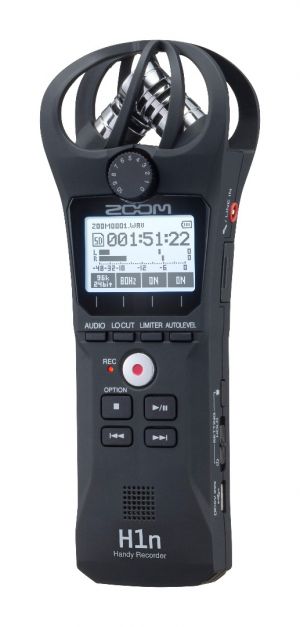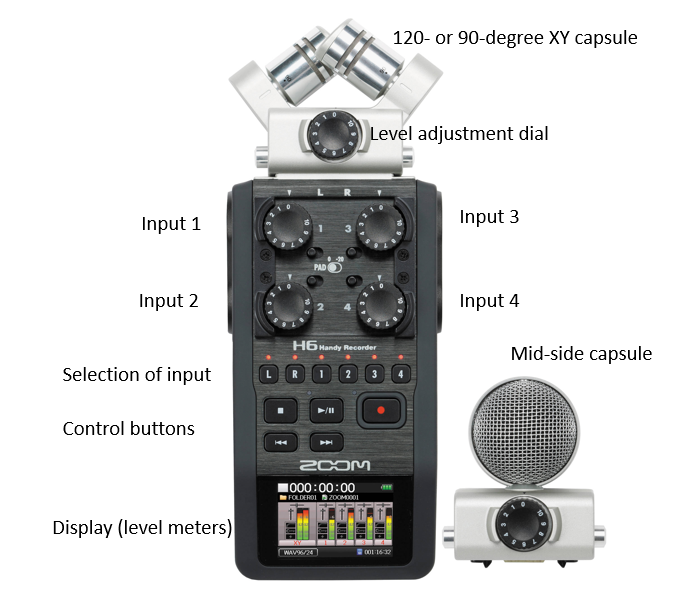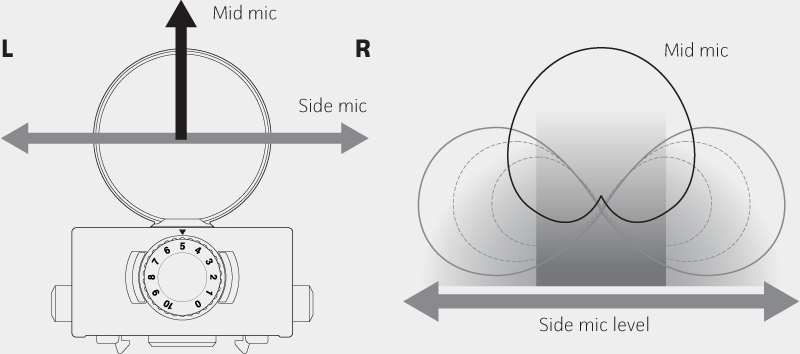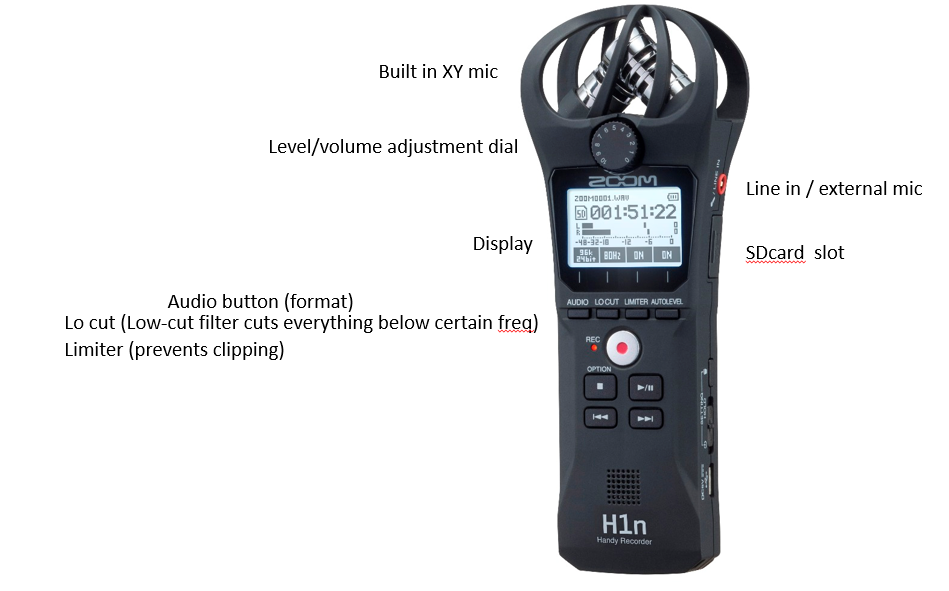Recording Audio with the wdka rental equipment
Recording Audio with the Zoom H6 and H1n
The Zoom H6
A video explanation on using the H6 here
The XY mic
The XYH-6 X/Y capsule comes standard with the H6.
The capsule adds two matched high-quality unidirectional microphones to your H6. This kind of microphone is most sensitive to signal coming from directly in front, and less sensitive to signal coming from behind or from the sides; in technical terms, they are said to utilize a cardioid polar pattern.
Playing back stereo X/Y tracks in mono results in a fuller sound than you would get with one microphone, but if mono compatibility is critical (for example, in television production), the Mid-Side (MS) mic technique can be a better choice.
The MS mic
Although the MSH-6 MS capsule appears to be just one microphone, it actually contains two mic elements, positioned directly on top of one another. One of the microphones inside the MSH-6 is unidirectional (that is, it is mostly sensitive to signal coming from directly in front, and less sensitive to signal coming from behind or from the sides) while the other is bi-directional (that is, it is mostly sensitive to signals coming from directly in front and directly behind, and less sensitive to signal coming from the sides).
The basic concept behind MS recording is that the Mid microphone picks up signal coming from the center, while the Side microphone creates ambience and directionality by adding or subtracting information from either side.
The Mid-Side technique works well whenever you need a variable amount of room sound. It can also be used for studio recording, and its convenience and flexibility make it a good option for rehearsal and live concert recording as well. Another benefit is that it provides total mono compatibility, making it an excellent choice for stereo recordings that may eventually be played back in mono, such as TV broadcasts.
The zoom H1n
A video explanation on using the H1n here





